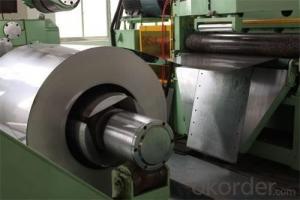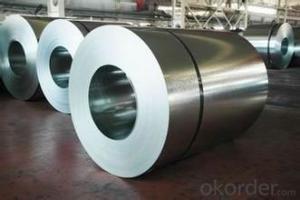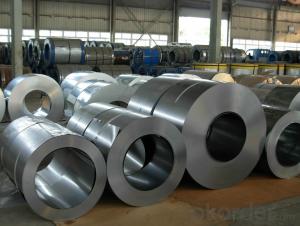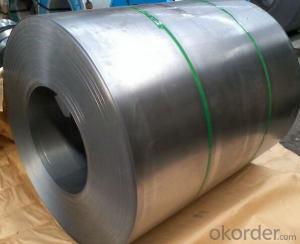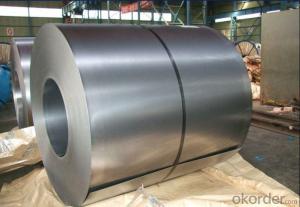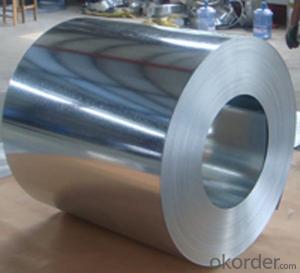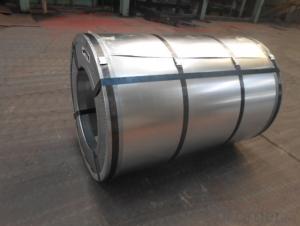Best Cold Rolled Steel Coil--Excellent Process Capability
- Loading Port:
- China main port
- Payment Terms:
- TT OR LC
- Min Order Qty:
- 50 m.t.
- Supply Capability:
- 10000 m.t./month
OKorder Service Pledge
OKorder Financial Service
You Might Also Like
Best Cold Rolled Steel Coil--Excellent Process Capability
1.Structure of Cold Rolled Steel Description:
The raw material of cold rolled steel coil/sheet is high quality hot rolled product, and after pickling continuous rolling, degreasing, annealing,skin pass,slitting and cut to length line etc. Along with it many kinds of new technology and new process of global cold rolling production have been applied. Therefore the quality of the goods could be guaranteed. The product is widely used in outdoor and interior decoration, furnishing manufacturing, home appliance, automobile etc.
2.Main Features of the Cold Rolled Steel:
• Excellent process capability
• Smooth and flat surface
• Workability, durability
• Excellent heat resistance performance
3. Cold Rolled Steel Images
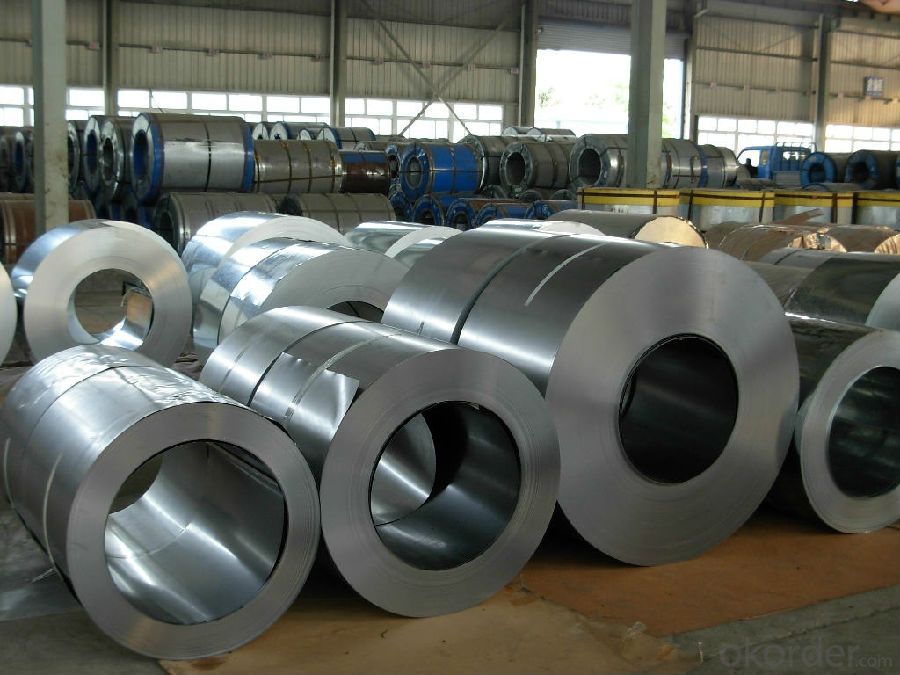
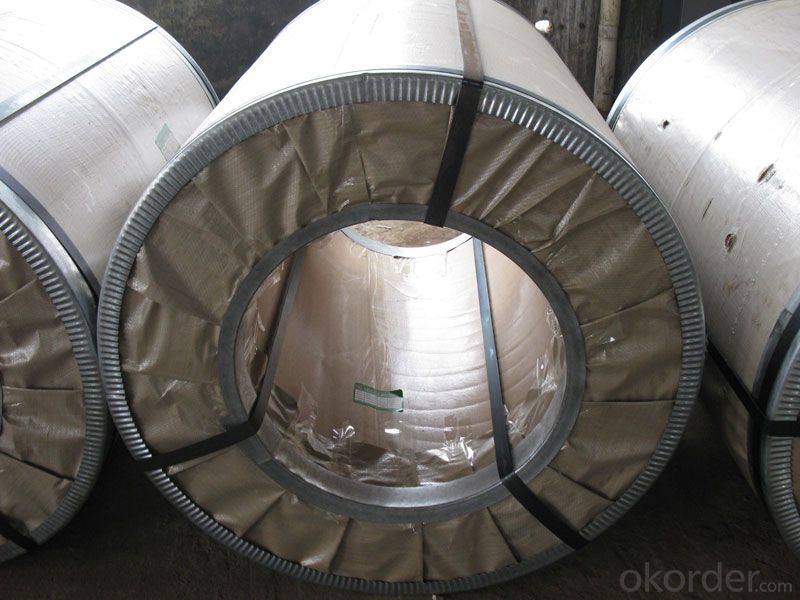
4.Cold Rolled Steel Specification
Standard:AISI,ASTM,DIN,GB,JIS,JIS G3302 ASTM 653M EN10142
Grade: Q195~Q345
Thickness: 0.16mm~2.0mm
Width: 1250mm MAX
Coil weight:3-12 MT
Coil ID:508/610mm
FAQ Best Cold Rolled Steel Coil--Excellent Process Capability
1.How to guarantee the quality of the products?
We have established the international advanced quality management system,every link from raw material to final product we have strict quality test;We resolutely put an end to unqualified products flowing into the market. 、2. How long can we receive the product after purchase?
Usually within thirty working days after receiving buyer’s advance payment or LC. We will arrange the factory manufacturing as soon as possible. The cargo readiness usually takes 15-25 days, but the shipment will depend on the vessel situation.
- Q: I am looking to weld some stainless steel using stainless electrodes. I was told that the arc welder needs to be able to run in DC in order to be able to weld stainless steel. Is this true? Or can you weld stainless steel with stainless electrodes with AC also?
- Arc or stick welding is not ideal for stainless steel. It is advisable to use MIG or TIG welding instead, with argon shield gas. I would only advise manual arc welding as a last resort, or for field repairs. Expect corrosion issues, and issues with excessive oxidation and porosity in your stainless welds. Manual arc welding is a dirty process and simply does not protect the weld puddle well enough from oxidation and carbon pickup, which are especially damaging in sensitive stainless alloys. As to whether to use AC or DC for stick welding, you should consult the instructions found on the box of electrodes. If polarity and current recommendations cannot be found, then you should contact the manufacturer and get it in writing. You should probably not make welding decisions based on advice from a sales representative. Firstly is is not documented. Secondly, sales representatives are not legally liable for damages caused by weld failures, YOU are.
- Q: Can steel coils be coated with self-cleaning materials?
- Yes, steel coils can be coated with self-cleaning materials. These materials, typically hydrophobic or photocatalytic coatings, can help prevent the accumulation of dirt, grime, and other contaminants on the surface of the steel coils. This not only maintains the aesthetic appeal of the coils but also reduces the need for frequent cleaning and maintenance.
- Q: What is the difference between galvanized and galvalume steel coils?
- Galvanized and galvalume steel coils are both types of steel coils that have undergone a coating process to enhance their durability and resistance to corrosion. However, there are distinct differences between the two. Galvanized steel coils are coated with a layer of zinc. This coating provides excellent corrosion resistance and protects the underlying steel from rust and other forms of deterioration. The zinc coating also acts as a barrier against moisture and prevents the steel from coming into direct contact with the elements. Galvanized steel coils are commonly used in applications where corrosion resistance is crucial, such as in construction, automotive manufacturing, and agricultural equipment. On the other hand, galvalume steel coils are coated with a combination of zinc and aluminum. This unique coating composition provides enhanced corrosion resistance compared to galvanized steel coils. The aluminum in the coating acts as a sacrificial anode, offering additional protection to the steel by sacrificially corroding instead. This sacrificial protection mechanism helps the underlying steel to remain intact and prevents the spread of corrosion even if the coating is damaged. Galvalume steel coils are often used in environments where extreme weather conditions and high humidity are prevalent, making them suitable for roofing, siding, and other outdoor applications. In summary, the main difference between galvanized and galvalume steel coils lies in the composition of their coatings. Galvanized steel has a zinc coating, while galvalume steel has a combination of zinc and aluminum. Galvalume steel offers superior corrosion resistance due to the sacrificial protection provided by the aluminum in the coating. The choice between the two depends on the specific application and the level of corrosion resistance required.
- Q: How are steel coils used in the production of metal cladding?
- Steel coils serve as the primary raw material for metal cladding production. Metal cladding involves covering a building's exterior with a layer of steel to enhance its durability, aesthetics, and insulation. To begin the manufacturing process, galvanized steel coils are used. These coils are made by coating steel with zinc to prevent corrosion. They are then unrolled and fed into a roll-forming machine, which shapes them into the desired profile for the cladding panels. Once the coils are formed, they undergo various processes to improve their properties. These processes include cutting, perforating, and embossing to create patterns, textures, or openings in the panels. Additional protective layers, such as paint or powder coating, can also be applied to enhance corrosion resistance and appearance. The shaped and processed coils are assembled into metal cladding panels. These panels interlock seamlessly to create an appealing exterior for buildings. They can be attached to the building's structure using screws, clips, or adhesives. Using steel coils in metal cladding production offers several advantages. Steel is a strong and durable material, making it suitable for exterior applications that require resistance to weathering, impact, and other environmental factors. It also allows for a wide range of design options and customization. In summary, steel coils are essential in the production of metal cladding. They serve as the raw material, which is shaped, processed, and assembled into panels that enhance buildings' protection, aesthetics, and insulation properties.
- Q: What are the main factors that affect the paint adhesion on steel coils?
- The main factors that affect paint adhesion on steel coils are surface cleanliness, surface roughness, presence of contaminants, proper surface preparation, and the type of paint or coating being used.
- Q: Can steel coils be coated with tin?
- Yes, steel coils can be coated with tin through a process called tinplating. Tinplating provides corrosion resistance and enhances the appearance of the steel surface.
- Q: What are the common uses of pre-painted steel coils?
- Pre-painted steel coils are commonly used in various industries such as construction, automotive, and appliance manufacturing. They are used for roofing and siding applications, as well as for making durable and aesthetically pleasing metal doors, window frames, and garage doors. Additionally, pre-painted steel coils are utilized in the production of electrical enclosures, air conditioning systems, and various other metal components that require corrosion resistance and a visually appealing finish.
- Q: Can steel coils be cut or trimmed after delivery?
- Yes, steel coils can be cut or trimmed after delivery using various cutting methods such as shearing, slitting, or laser cutting, depending on the desired specifications and requirements.
- Q: How do steel coil manufacturers meet customer specifications?
- Customer specifications are met by steel coil manufacturers through a comprehensive and systematic approach that involves various stages and processes. The following are some key steps taken: 1. Thoroughly understanding customer requirements: The process begins with manufacturers gaining a complete understanding of their customers' specific requirements. This includes determining the desired dimensions, tolerances, mechanical properties, surface finish, and any other specific characteristics needed. 2. Selecting the appropriate materials: Based on the customer's requirements, manufacturers carefully select the suitable type and grade of steel to meet the specifications. Factors considered include strength, corrosion resistance, formability, and cost-effectiveness. 3. Planning production: Manufacturers meticulously plan their production processes to ensure that customer specifications are met. This involves determining the appropriate manufacturing techniques, equipment, and resources required. 4. Processing the coils: Steel coils undergo various stages such as hot rolling, cold rolling, annealing, pickling, and coating, depending on the customer's specifications. Each step is meticulously controlled to achieve the desired properties and dimensions. 5. Implementing strict quality control: Throughout the manufacturing process, strict quality control measures are enforced to ensure that the coils meet the customer's specifications. This includes regular inspections, testing, and compliance with industry standards. 6. Offering customization and flexibility: Steel coil manufacturers frequently provide customization options to meet specific customer needs. They have the capability to adjust the thickness, width, and length of the coils to match the desired specifications. 7. Promoting effective communication and collaboration: Effective communication and collaboration between the manufacturer and the customer are crucial in meeting specifications. Manufacturers work closely with their customers to address any concerns or modifications required during the manufacturing process. 8. Providing detailed documentation and certification: Once the steel coils are manufactured, manufacturers supply comprehensive documentation and certifications to ensure traceability and compliance with customer specifications. This includes test reports, material certificates, and any other necessary documentation. By adhering to these steps, steel coil manufacturers can consistently meet customer specifications, guaranteeing that the final product aligns with the desired requirements and quality standards.
- Q: How are steel coils used in the production of automotive structures?
- Steel coils are used in the production of automotive structures as they are transformed into various components and parts such as body panels, chassis, and suspension systems. These coils are processed by manufacturers to obtain the desired shape and thickness required for different automotive applications. The malleability and strength of steel allow for the creation of durable and rigid structures, ensuring the safety and reliability of vehicles.
Send your message to us
Best Cold Rolled Steel Coil--Excellent Process Capability
- Loading Port:
- China main port
- Payment Terms:
- TT OR LC
- Min Order Qty:
- 50 m.t.
- Supply Capability:
- 10000 m.t./month
OKorder Service Pledge
OKorder Financial Service
Similar products
Hot products
Hot Searches
Related keywords
